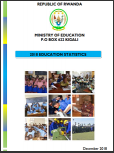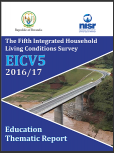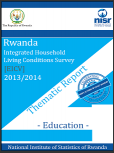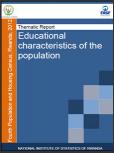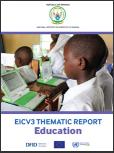2018 Education Statistics Report
Education data is collected through annual data collection exercise using questionnaires specifically designed for that purpose. All data are collected via decentralized channels (districts, sectors and schools). However, data on tertiary education sector is collected directly from tertiary institutions, data on National Employment Program (NEP) was collected from the NEP department in Rwanda Polytechnics (RP).
EICV5_Thematic Report_Education
The purpose of this report is to present, analyze and interpret the data collected from the 2016/2017 EICV5 to enable assessment of the progress made in the education sector in the last three years. It presents data on education attendance, education attainment, literacy, access to primary and secondary education while attempting to identify factors which affect these education levels. Further, the report also probes access to technical, vocational and higher learning education.
EICV 4 THEMATIC REPORT - Education
The 6 thematic reports in this series are: (i) Economic Activity; (ii) Utilities and Amenities (water/sanitation/energy/housing/transport/ICT); (iii) Environment and Natural Resources; (iv) Gender; (v) Youth; (vi) Education.
RPHC4 Thematic Report: Educational Characteristics of the Population
This report focuses on the theme of education and uses data collected by the Fourth Rwanda Population and Housing Census in August 2012 (RPHC4). The report is structured into five chapters, with the first two providing an overview of the RPHC4 process and the objectives, context and methodological aspects of the analytical work. Chapter 3 of the report focuses on providing a snapshot of the highest level of education of the resident population aged three and above, while the school-age population and the population currently attending school are the focus of Chapter 4.
EICV 3 THEMATIC REPORT - Education
The 10 thematic reports in this series are: (i) Economic Activity; (ii) Utilities and Amenities (water/sanitation/energy/housing/transport/ICT); (iii) Social Protection; (iv) Environment and Natural Resources; (v) Consumption; (vi) Gender; (vii) Youth; (viii) Education; (ix) Agriculture and (x) Income.

